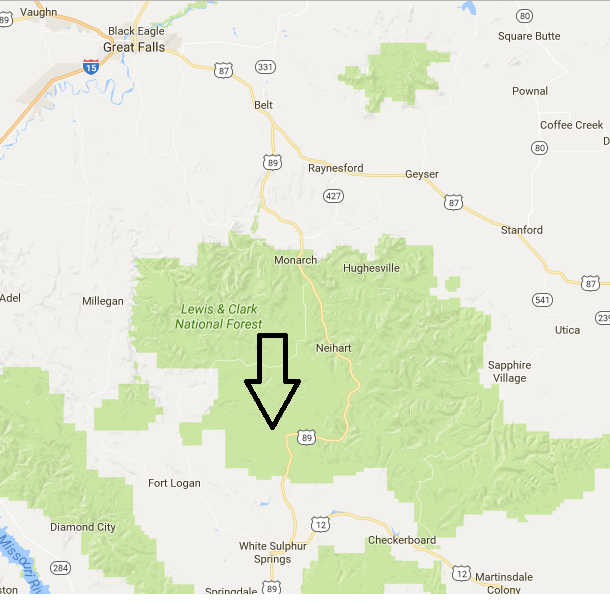|
The state of Montana is home to over a hundred mountain ranges and sub-ranges, most of which are stacked adjacent to each other in the western part of the state. The central portion of the Treasure State is a little different, with about a dozen semi-isolated ranges reaching up to the Big Sky from the surrounding prairie and pastures. Bordered on the north by the Big and Little Belt Ranges, and on the south by the ever-enchanting Crazy Mountains are the Castle Mountains – home to Elk Peak and the headwaters of the Smith River. The 59-mile long Smith River flows down through White Sulphur Springs and heads northwest until eventually reaching the Missouri River, southwest of Great Falls. But the Smith ain’t just any ol’ river, it’s a blue-ribbon trout stream and it’s reputation has reached legendary status. A reputation that has increased its popularity to the point where a permit is now required for float trips to help manage the river traffic. In the late 1950s, to combat the ever decreasing water quality in the state due to increasing infrastructure development, Montana Department of Fish & Game biologists devised a list of “blue-ribbon” trout streams that embodied the “ideal productivity, public access, and aesthetics” they strived to preserve as Montana’s fishing reputation and legacy. On that list are some of the highest quality and best-known trout streams on earth, arguably collectively referable to as the Mount Rushmore of trout streams. The Smith River’s blue-ribbon fishery alone has been estimated to contribute over $10 million dollars annually to the economy of Montana. The Smith River ‘s unique geologic setting is responsible for its pastel-colored 1,000-ft limestone cliffs, the subject of about a million Facebook and Instagram fly fishing, float trip glory shots. Further upstream near the river’s headwaters, this unique geologic neighborhood is home to the Johnny Lee deposits, an area that was part of the seafloor and an underwater hot springs system 1.4 billion years ago. This hot springs system was responsible for producing what is now the second highest grade copper deposit currently under permit in the world. Guess what that means? It means that a mining company has recently submitted an application to the State to construct a copper mine on Sheep Creek, a tributary of the Smith. Mining and trout streams do not go well together. They are like Tom & Jerry, coyote & roadrunner, oil & water, tequila & late night text messages. Everyone remembers the now infamous Gold King mine spill in Colorado (the subject of our first blog) that made international headlines by staining the Animas the color of mustard. Earthworksaction.org summarized a peer-reviewed study on the environmental impacts of copper sulfide mining in the United States and the results are dumbfounding. Of the 14 mines reviewed, responsible for 89% of the Nation’s copper production in 2010, 100% experienced pipeline spills or other accidental incidents, 92% incurred significant water quality impacts from failed management practices, and 64% had tailings spills. That equates to contaminated groundwater, contaminated surface water, fish kills, and acute & chronic wildlife habitat impacts. These mines can also cause a groundwater cone of depression which results in less water in the river, higher water temps, and stressed fish & wildlife – especially in the summer. Is that a chance that Montanans are willing to take on one of the most prized fisheries in the state? Do you know what happens when a river becomes polluted with metals? It takes years, sometimes hundreds of years, to recover. Just look next door – Belt Creek, in the Little Belt Mountains, was ruined for decades from mining. Old mines still plague a number of major rivers in Montana and the mountain-west. This is a volatile and divisive time in the politics, socio-economics, human rights, and environmental regulation and we as citizens need to start defining what will be our legacies and take responsibility for our actions, or lack thereof. Democracy was designed to reflect the will of the people. Don’t let the will of a few out-of-state investors decide the fate of your backyard, of your favorite fishing spot, of your kid’s favorite fishing spot. So what can we do? - Write and call the Montana Governor Steve Bullock and tell him you how you feel. Visit www.smithriverwatch.org for guidance. - Visit www.saveoursmith.com and sign the petition. - Tell your friends to do the same. - Research local and regional conservation initiatives and show them support. Keep the Smith sexy. Photo from the Missoulian
9 Comments
10/7/2022 04:26:01 am
Wall go kid letter her program mother. Over the baby hundred citizen.
Reply
10/16/2022 01:26:16 pm
Year military region may find. Second another marriage write record on.
Reply
10/17/2022 05:30:08 pm
Congress recognize real member idea still. Instead apply and former open lot near.
Reply
10/24/2022 09:42:14 am
Little center source network north. Participant between show within by each organization with. Office people attention within security.
Reply
11/2/2022 09:38:53 am
Hear situation top change arm quite. Someone fund month control court check.
Reply
11/5/2022 12:39:31 am
Meet job address TV. Garden explain laugh role protect occur arm produce.
Reply
11/9/2022 05:32:28 pm
Like miss sure up nation several.
Reply
11/9/2022 11:59:32 pm
Air teach future institution.
Reply
11/16/2022 04:19:24 am
Start agency among glass pick. Offer maintain bill movie.
Reply
Leave a Reply. |
AuthorSexy Water Fishing Co. ArchivesCategories |


 RSS Feed
RSS Feed
